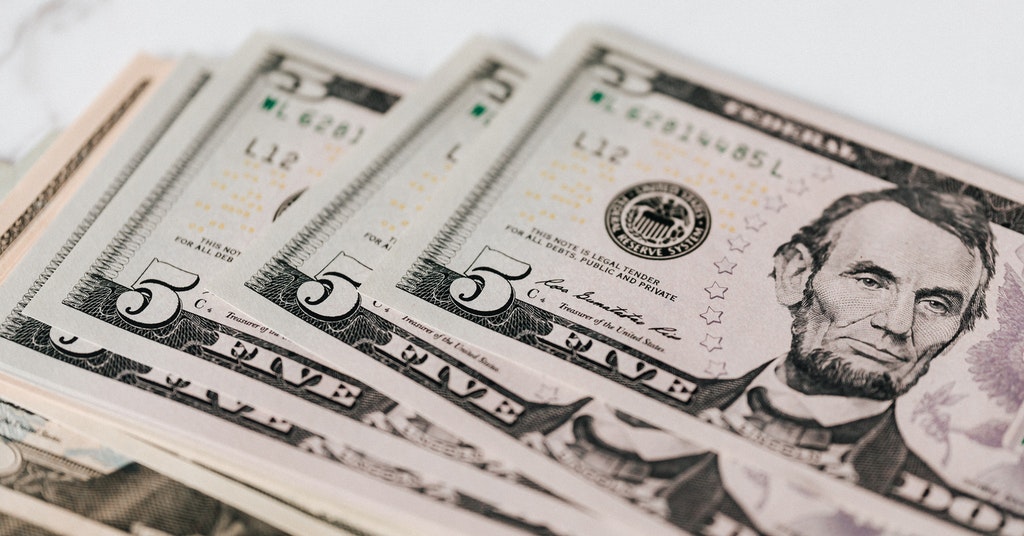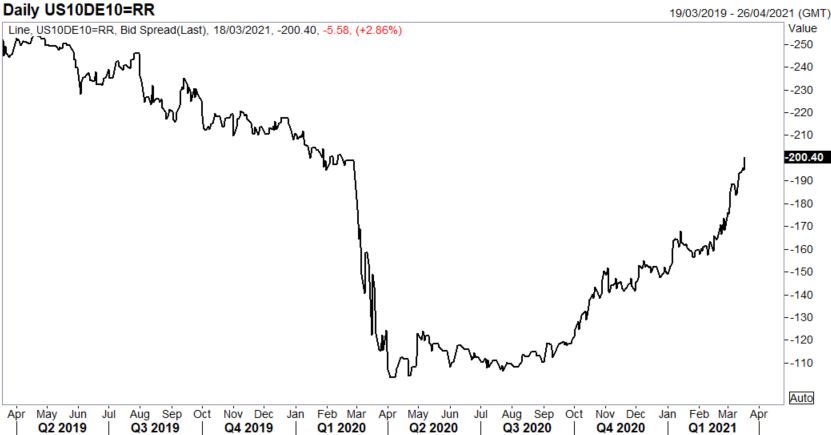![]()
Bader Al Hussain
PaySpace Magazine Analyst
State of US economy
After the advent of the COVID-19 pandemic, like other major economies of the world, the US economy was also hit hard. Growth went into negative territory, accompanying job losses, and sharp decreases in the income of households. Therefore, sensing financial hardships among the masses, the federal government of the United States rolled out one of the largest fiscal stimulus packages in its history. This was largely undertaken to ease the negative financial impact borne by a large percentage of the population, owing to the pandemic.
However, according to economists, a sharp recovery on the back of a successful vaccination campaign is expected to bring demand, pull inflation into the economy, and if the Fed did not increase its policy rate, then things might get out of hand. Nevertheless, there are also experts who believe such hyped concerns over higher than expected inflation are unwarranted. In this article, we will further delve into the arguments of both experts and try to form our own conclusion on this matter.

US dollar forecast: what’s coming next? Source: pexels.com
Dollar Smile
The dollar smile is a theory that says the U.S. currency tends to increase in value against other currencies when the U.S. economy is extremely weak or very strong. It goes up at either end of the spectrum, just like the smile on your face.
For instance, when the COVID-19 pandemic hit the global financial markets, there was a flight to safety, this sharply decreased the yields on US treasuries and bonds due to their higher demand. Thus, the dollar performed better relative to other major currencies in the world.
The expected performance of the dollar relative to other currencies and commodities
Further, owing to a rebound in global economic activity with higher liquidity in the financial markets, if the Fed did not adopt a hawkish policy, then there will be an expected depreciation in the dollar value relative to other currencies. This is because the advent of higher inflation in the US economy will make the real interest rate go into negative territory, triggering a depreciation in the currency. Let’s now analyze the expected performance of the dollar relative to other currencies.
Performance of US Dollar with respect to gold
As mentioned earlier, any global crisis results in a spike in the demand for high-quality US assets around the world. This sharply reduces the expected yield on US assets. So, when the yield nears zero, investors start to go for another safe investment i.e., gold. Given the rising yields on US treasuries, I expect the US dollar to outperform gold.
Performance of US Dollar with respect to Euro
Let’s start with the EUR/USD pair, as it represents one of the most powerful and influential economies of the world. The market expects the Euro to depreciate with respect to the dollar on account of the following reasons:
- The European Union seems to be struggling to vaccinate its population against COVID-19, raising fears of another lockdown. This is because the EU is behind countries like the US and the UK in vaccinating its people against the coronavirus, stoking fears of another lockdown. Thus, damaging the prospects of economic recovery from the slump caused by the COVID-19 pandemic.
- The gap between the positive yield on the benchmark US 10-year Treasury note and the negative yield on the 10-year German Bund – the bellwether for the Eurozone – is rising. This is going to incentivize the investors to favor the US dollar over the Euro.
Thus, keeping the above factors into consideration, I expect the US dollar to outperform the Euro for the foreseeable time.
Performance of the US Dollar with respect to the Chinese Yuan
The better economic outlook of both economies coupled with lowering concerns related to trade wars is expected to bode well for global free trade. It is apparent now that the Chinese Yuan has been devalued deliberately by the Chinese central bank in order to make its exports more attractive to the world. Therefore, despite a healthy performance of the Chinese economy, I expect the US dollar to outperform the Chinese Yuan for the foreseeable period.
Performance of the US Dollar with respect to the Swiss Franc
The market technical outlook for the Swiss Franc relative to the US dollar is bearish on the back of a lower than expected performance of Switzerland. Although the country has fared better than most in the COVID-19 pandemic, the global demand for the US dollar is expected to appreciate relative to other major currencies.
Inflation concerns amidst rising money supply
The exponential rise in assets on the balance sheet of central banks has made the markets jittery, as investors’ concerns related to inflation have increased. Such expected trends in an economy foretell a rise in interest rates by the central banks of these respective countries.
The concerns for the expected inflation germinate from the fact that the yield on the 10-year US Treasury bonds is approximately 1.4%, the highest in a year. Generally, a bond yield has two vital components: an expected rate of inflation, and a real (inflation-adjusted) yield. The real (inflation-adjusted) yield reflects supply and demand conditions in the bond market.
The expected rate of inflation can be inferred from the so-called ‘break-even rate’. The break-even rate is calculated by subtracting the yield on Treasury Inflation-Protected Securities (TIPS) from the headline bond yield. This is because the principal on the TIPS moves in line with inflation and the difference between the headline yield and the TIPS yield is the expected rate of inflation, also known as the break-even rate.
Federal Reserve Chairman Jay Powell testified in Congress and concluded his hearing with the following words,” The economy is a long way from our employment and inflation goals, and it is likely to take some time for substantial further progress to be achieved. We will continue to clearly communicate our assessment of progress toward our goals well in advance of any change.” Thus, the chairman expects lower interest rates and continuing the purchase of assets for the foreseeable future. So, the concerns over rising interest rates over higher inflation (i.e. above 2% per annum) are unwarranted.
Conclusion
Apart from inflation concerns, more than 100 million people vaccinated, and a sharp recovery in the economy is expected to push the demand for the US dollar in the global forex market. This is because the US recovery is expected to outpace that of the European Union.
SEE ALSO:











